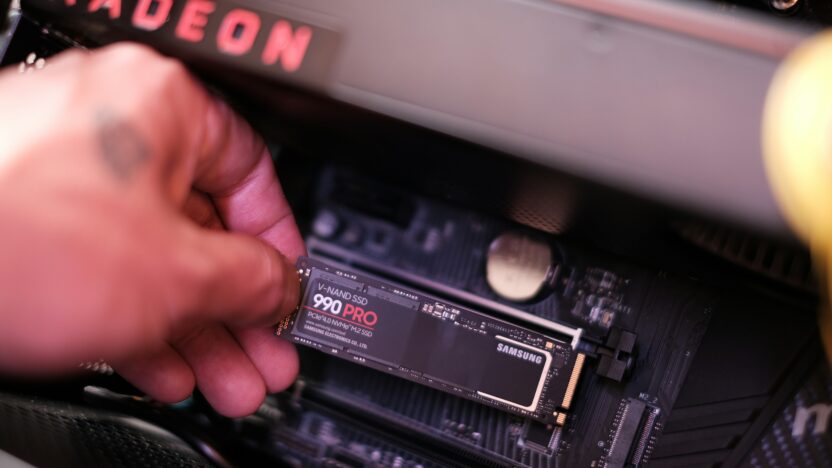Introduction to SSD, M.2, and NVMe
Defining SSD, M.2, and NVMe
To put it simply, SSD stands for Solid State Drive, M.2 is a form factor for storage drives, and NVMe is a protocol for accessing data on SSDs at blazing speeds.
Evolution of Storage Technologies
From the slow and clunky days of hard disk drives (HDDs) to the sleek and speedy SSDs, the evolution of storage tech has been a wild ride. M.2 and NVMe are the latest power couple shaking things up in the storage world.
Speed and Performance Comparison
Sequential Read and Write Speeds
Think of sequential read and write speeds as the express lanes for data on your drive. NVMe reigns supreme here, zooming past SSDs and M.2 drives like they’re standing still.
Random Read and Write Speeds
Random read and write speeds are like navigating through a crowded market—NVMe’s agility shines when it comes to handling multiple tasks at once, leaving SSDs and M.2 drives in its dust.
Form Factor and Compatibility
Physical Dimensions of SSD, M.2, and NVMe
When it comes to size, SSDs are the chunky monkeys, M.2 drives are the sleek siblings, and NVMe is the pint-sized powerhouse that packs a punch in a small form factor.
Connection Interfaces and Compatibility
Compatibility can be a real headache, but fear not. NVMe and M.2 drives slide into your motherboard like a dream, while SSDs might need a little extra love with cables and brackets.
Pricing and Value Proposition
Cost per GB Analysis
Money talks, especially when it comes to storage. NVMe might be the speed demon, but SSDs and M.2 drives often win on the cost-per-gigabyte battleground.
Performance-to-Price Ratio
In the battle between speed and savings, finding the sweet spot is key. NVMe might be the flashy Ferrari of storage, but SSDs and M.2 drives offer a more budget-friendly ride without sacrificing too much performance.
Considerations for Specific Use Cases
Gaming and Multimedia Applications
For gamers and multimedia enthusiasts, speed and performance are key factors to consider. An NVMe drive would be the optimal choice due to its lightning-fast read and write speeds, reducing loading times and improving overall system responsiveness. This can lead to smoother gameplay experiences and quicker media editing processes.
Professional Workstation and Server Environments
In professional workstation and server environments where large files are commonly accessed and transferred, an M.2 SSD might be the preferred option. M.2 SSDs offer a balance of speed, reliability, and storage capacity, making them suitable for handling intensive workloads and ensuring efficient data processing.
Future Trends and Technology Advancements
Emerging Technologies in Storage
As technology continues to evolve, we can expect advancements in storage solutions, such as denser storage capacities and improved data transfer speeds. Innovations like multi-layered QLC NAND and PCIe 4.0 interfaces are paving the way for faster and more efficient storage devices.
Potential Impact on Consumer Choices
These emerging technologies are likely to influence consumer choices when selecting storage options. Consumers may prioritize factors like price, performance, and compatibility with newer systems as they navigate the ever-changing landscape of storage technology.
Making the Decision: Factors to Consider
Storage Needs and Usage Patterns
Understanding your storage needs and usage patterns is crucial in making the right decision. Consider factors such as the size of files you work with, the frequency of data access, and the importance of speed in your workflow to determine which storage option best suits your requirements.
Budget Constraints and Future Upgrade Paths
Budget constraints play a significant role in the decision-making process. While NVMe drives offer top-tier performance, they come at a higher price point compared to traditional SSDs. Evaluate your budget and future upgrade paths to strike a balance between performance and affordability.
Conclusion: Choosing the Right Storage Option
When it comes to choosing between SSD, M.2, and NVMe drives, there is no one-size-fits-all solution. Consider your specific use case, future technology trends, storage needs, budget constraints, and upgrade paths to make an informed decision. Whether you prioritize speed, capacity, or affordability, the right storage option is one that aligns with your unique requirements and preferences.





